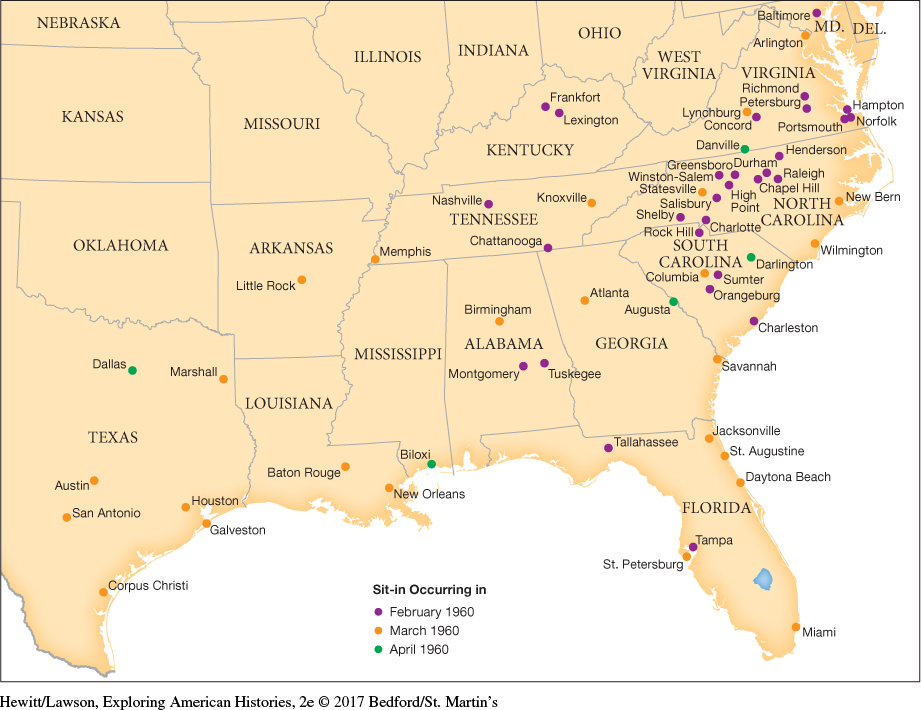The Sit-Ins
With boycotts petering out and white violence rising, African Americans, especially high school and college students, developed new techniques to confront discrimination, including sit-ins, in which protesters seat themselves in a strategic spot and refuse to move until their demands are met or they are forcibly evicted. These mass protests did not really get off the ground until February 1960, when four students at North Carolina A&T University in Greensboro initiated sit-ins at the whites-only lunch counters in Woolworth and Kress department stores. Their demonstrations sparked similar efforts throughout the Southeast (Map 25.1).

Explore
See Documents 25.2 and 25.3 for two views of the meaning and importance of the civil rights movement.
A few months after the sit-ins began, a number of participants formed the Student Nonviolent Coordinating Committee (SNCC). The organization’s young members sought not only to challenge racial segregation in the South but also to create interracial communities based on economic equality and political democracy. This generation of black and white sit-in veterans came of age in the 1950s at a time when Cold War democratic rhetoric and the Supreme Court’s Brown decision raised their expectations for racial equality. Yet these young activists often saw their hopes dashed by southern segregationist resistance, including the murder of Emmett Till, which both horrified and helped mobilize them to fight for black equality.
Exploring American HistoriesPrinted Page 842
Exploring American Histories Value EditionPrinted Page 623
Chapter Timeline